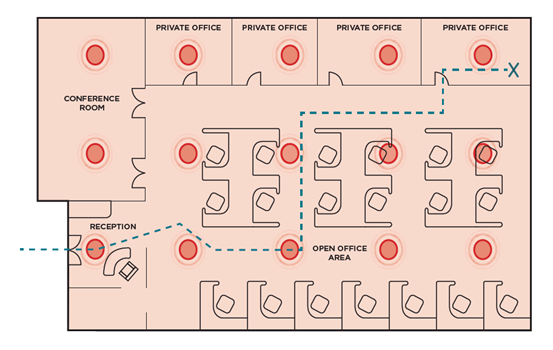We often hear sound masking referred to as “white noise,” which really is just a simplistic term for any constant background sound, such as music, HVAC noise, etc. In this regard, virtually anything can be considered white noise so long as it is relatively constant. However, sound masking is a very specific type of noise that acoustical engineers have created for the purpose of speech privacy.
And unlike white noise output, a critical factor when planning a sound masking system is to specify enough loudspeakers to ensure the output is distributed as uniformly as possible. The more uniform a sound is, the easier it is for occupants to tune it out. Any hot spots, dead spots, or other changes to the output increase the likelihood of the occupants noticing it.
Simply put, sound masking should be unwavering, constant, and unchanging.
Which is why sound masking often is installed in spaces where we are not necessarily concerned with speech privacy, such as hallways, reception areas, lobbies, and transitional areas.

Building occupants should move throughout the environment (e.g., from the lobby, down a corridor and through open-office areas) without noticing variations in output.
But at times sound masking system designers under-specify the number of loudspeakers needed to achieve a uniform masking system. And while it’s true that fewer loudspeakers means a lower cost, it also means poor sound masking performance. That’s because without the proper number of speakers there’s little to no uniformity, which results in a sound masking system that’s noticeable – thereby becoming a distraction – which totally defeats the purpose of sound masking.
Unfortunately, employee comfort and productivity suffer in such an environment.